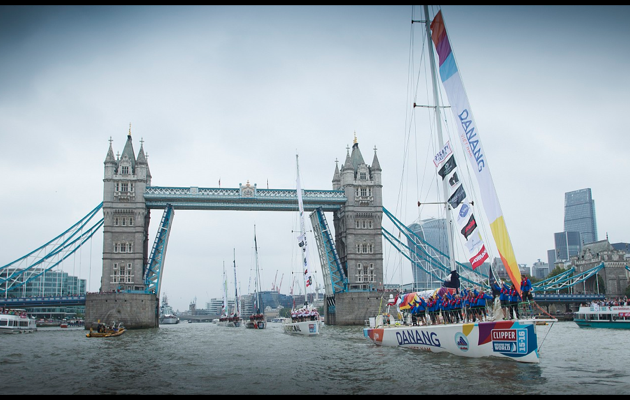Americans Are Fighting For Control Of Federal Powers That Shouldn’t Exist
Today’s federal government is almost entirely unconstitutional
It’s no secret that politics in the United States is growing increasingly acrimonious — to the point that a 2022 poll found 43% of Americans think a civil war is a least somewhat likely in the next decade.
But here’s what few people realize: The intensity of our division springs from a federal government operating far beyond the limits of the Constitution — fueling a fight for control over powers that were never supposed to exist at the national level.
To put it another way, if the federal government were confined to its actual granted authorities, federal elections would be of little interest to the general public, because the outcome would be largely irrelevant to their everyday lives.
America’s founders drafted the Constitution with great trepidation. Having just escaped British tyranny, the people of the separate states that would comprise the proposed union were wary of centralizing too much power at the federal level, and thus sowing the seeds of a new tyranny.
They therefore set out to create a federal government to which the states delegated only certain limited powers, with all other subjects of governance reserved to the states.
Those powers — only 18 of them — are listed, one by one, in Article I, Section 8 of the Constitution. They include such things as the power to raise armies, maintain a navy, declare war, borrow money, coin money, establish punishments for counterfeiters and pirates, set standards of weights and measures, secure patents and establish post offices.
Reassuring those who were considering the enormously consequential decision of whether to ratify the Constitution, James Madison wrote,
“The powers delegated by the proposed Constitution to the federal government are few and defined. Those which are to remain in the State governments are numerous and indefinite. [Federal powers] will be exercised principally on external objects, as war, peace, negotiation, and foreign commerce…The powers reserved to the several States will extend to all the objects, which, in the ordinary course of affairs, concern the lives, liberties and properties of the people.”
To win over those would-be ratifiers who still feared the proposed federal government would undercut state sovereignty and infringe individual liberties, ten amendments were drafted — the Bill of Rights. The 10th Amendment codified Madison’s previous assurance about the division of authorities between the federal and state governments:
“The powers not delegated to the United States by the Constitution, nor prohibited by it to the States, are reserved to the States respectively, or to the people.”
We arrive then at a hard fact: Today’s sprawling federal government, which involves itself in almost every aspect of daily American life, is almost entirely unconstitutional.
To rattle off just a random fistful of the federal government’s unauthorized undertakings and entities — brace yourself — there is zero constitutional authority for the Social Security, Medicare, federal drug prohibitions, the Small Business Administration, crop subsidies, the Department of Labor, automotive fuel efficiency standards, climate regulations, the Federal Reserve, union regulation, housing subsidies, the Department of Agriculture, workplace regulations, the Department of Education, federal student loans, the Food and Drug Administration, food stamps, unemployment insurance or light bulb regulations. Even that sampling doesn’t begin to fully account for the scope of the unsanctioned activity.
Don’t let your affinity for any of those enterprises short-circuit your intellectual honesty: Even if you view some of them as benign, that doesn’t render them constitutional. And if you’ve ever invoked the Constitution to spotlight a different kind of government overreach, it would be hypocritical to nod approvingly when it’s violated in ways where you deem the result beneficial.
So how did we get to this place where the intended relationship between federal and state powers has been completely inverted — with a federal government wielding powers that are now “numerous and indefinite” rather than being “few and defined”?
Much of the current state of affairs has been driven by the Supreme Court’s extreme and expansive interpretations of certain clauses of the Constitution. Among the most significant are the General Welfare and Commerce clauses.
The General Welfare Clause, found at the start of Article 1, Section 8, says:
The Congress shall have power to lay and collect taxes, duties, imposts and excises, to pay the debts and provide for the common defense and general welfare of the United States…
Embedded in a clause focused on the power to tax, the words “general welfare” were meant to ensure that Congress’s taxation and spending would be confined to purposes that were broadly beneficial, rather than catering to narrow or localized interests.
The clause’s language was copied from the Articles of Confederation, where, as Madison explained, “it was always understood as nothing more than a general caption to the specified powers.” Indeed, he said, it was copied for the very reason that its prior use and understanding would hopefully minimize the risk of it being misinterpreted as a grant of power.
It flies in the face of reason that the drafters of the Constitution would take pains to carefully list the Congress’s specific authorities, yet simultaneously say Congress could also do anything it thinks generally beneficial.
Countering those who sought to interpret the clause that way, Thomas Jefferson wrote, “To consider the…phrase…as giving a distinct and independent power to do any act they please, which might be for the good of the Union, would render all the preceding and subsequent enumerations of power completely useless.”
Clearly, based on context and history, those two words, general welfare, do not bestow an authority. Indeed, they’re present to limit an authority — the power to tax and spend.
The forces seeking to reshape the federal government by exploiting those two words were held at bay, but only for so long. In 1937, the Supreme Court used the imaginatively expansive interpretation of the General Welfare Clause to turn back a constitutional challenge to the Social Security Act — and to set a precedent that would fundamentally change the nature of our federal government.
That decision — Helvering v. Davis — came as the court was under intense institutional duress. Following a wave of high court decisions rightly striking down various pieces of New Deal legislation as unconstitutional, President Roosevelt — emboldened by his massive landslide reelection in 1936 — pushed a legislative scheme that would enable him to appoint as many as six more justices to the Supreme Court.
Whether to derail that plan or to merely cave to the overwhelming public opinion manifested in FDR’s jaw-dropping 523-8 electoral college landslide, the court — thanks in great part to swing-vote Justice Owen J. Roberts — began stamping its approval on New Deal legislation, with Helvering among the first.
Fittingly for a ruling that eviscerated limited government in America, Helvering’s very language had its own air of authoritarianism:
“Congress may spend money in aid of the ‘general welfare.’ There have been great statesmen in our history who have stood for other views. We will not resurrect the contest. It is now settled by decision.”
As if that proclamation didn’t do enough to demolish the concept of limited federal government, the court proceeded to amplify the damage. While acknowledging that determining what falls under “general welfare” requires discretion, the court declared, “the discretion…is not confided to the courts. The discretion belongs to Congress.” Thus, the court not only granted broad new power to Congress, but also limited the extent to which that power would be subject to checks and balances.
We don’t have to imagine how the “Father of the Constitution” would feel about the Supreme Court’s interpretation of the welfare clause. In 1792, Madison wrote, “The federal government has been hitherto limited to the specified powers…If not only the means, but the objects [purposes] are unlimited, the parchment had better be thrown into the fire at once.”
While the Welfare Clause has been abused to expand federal spending power, Commerce Clause abuse has unleashed sprawling federal regulatory power. As with the Welfare Clause, what was meant to curtail government intrusion into the lives of Americans has perversely been used to expand it.
The Commerce Clause gives Congress the power to “regulate commerce with foreign nations, and among the several states, and with the Indian tribes.” The Supreme Court’s sham interpretation focuses on “among the several states.”
It’s important to consider that the Constitution was drafted to replace the Articles of Confederation. Among the woes that prompted that evolution was the imposition of tariffs by individual states against other states. The Commerce Clause was intended to enable a free trade zone within the union, by empowering Congress to bar interstate tariffs.
“It grew out of the abuse of the power by the importing States in taxing the non-importing,” wrote Madison, “and was intended as a negative and preventive provision against injustice among the States themselves, rather than as a power to be used for the positive purposes of the General Government.”
Those working to expand federal authority have argued that “commerce” doesn’t merely apply to trade, but also encompasses manufacturing and agriculture or even “all gainful activity.”
However, in the constitutional ratification debates, the word “commerce” uniformly and narrowly referred only to mercantile trade or exchange — not to manufacturing, agriculture or retail sales, much less to any gainful activity.
Thomas Jefferson underscored the intended scope of the clause:
“The power given to Congress by the Constitution does not extend to the internal regulation of the commerce of a State, (that is to say of the commerce between citizen and citizen,) which remain exclusively with its own legislature; but to its external commerce only, that is to say, its commerce with another State, or with foreign nations, or with the Indian tribes.”
However, the Commerce Clause is now used to justify federal regulation of nearly every aspect of our existence, including activities that happen entirely within a single state. On this front, the Supreme Court did its greatest harm with its 1942 decision in Wickard v Filburn.
In a move that would leave founding farmers aghast, the federal government had fined Ohio farmer Roscoe Filburn for growing more wheat on his small farm than allowed by the Agriculture Adjustment Act of 1938.
Filburn wasn’t even growing the wheat for sale — only to feed his own family and animals, and for future planting. This clearly wasn’t commerce as meant by the Constitution’s authors and ratifiers, to say nothing of the fact that Filburn’s activity lacked any interstate character whatsoever.
That didn’t stop the Supreme Court from upholding the law on Commerce Clause grounds. The court creatively declared that, by choosing not to buy wheat in the marketplace, individuals like Filburn could collectively have a substantial effect on interstate commerce.
As Rand Paul wrote in a 2012 Supreme Court amicus filing, “Wickard stands for the sad proposition that Congress can prevent a man from feeding his family in his own home with food he grew himself.” Of course, it does far more than that, serving as a key precedent that subjects any activity to the federal government’s control and punishment. All that’s needed is a theoretical, tangential link to the economy — something every single aspect of life has to some degree.
We’d be far better off had the founding arrangement endured. The decentralization of power and governance reduces political discord and results in more people being governed in ways they find agreeable. If our federalism matched the constitutional design, we’d see citizens focusing most of their political energy on state and local governments — where they have far more meaningful representation compared to the federal legislature, which now has the average House member representing 761,000 people.
If state law, rather than federal law, were preeminent on the vast majority of topics, we’d also see sharper differentiations in what life is like in each of the 50 states. Americans would be presented with a more diverse selection of places to live, while enjoying the freedom to choose the one that best comports with their views on how things should be.
As it is, the Supreme Court-enabled concentration of power in Washington locks us all into a massive, winner-take-all steel-cage match, forcing us to fight over who gets to impose their philosophy on 332 million people across 3.8 million square miles of territory.
Even when the states comprising the union were far fewer in number and occupied far less territory, the prospect of centralized government was anathema to the likes of George Mason. At Virginia’s ratifying convention, he asked, “Is it to be supposed that one national government will suit so extensive a country, embracing so many climates, and containing inhabitants so very different in manners, habits, and customs?”
How can we close the Pandora’s box the Supreme Court has opened? Though Helvering, Wickard and similar decisions are objectively outrageous, it’s hard to imagine the Supreme Court setting things right by overturning them.
There’s another long-shot avenue — amending the Constitution. Under Article V, a constitutional amendment convention must be convened if two-thirds (34) of the state legislatures call for one. Such a movement is already underway: As I previously covered, 19 states have now requested a convention, with one of the goals being to limit federal jurisdiction and power.
If we don’t bend the union back into proper shape, it will surely break under the pressure of intensifying discontent with concentrated power and one-size-fits-all governance. Barring a burst of constitutional-amendment momentum, expect the country’s simmering secession movements to grow far more substantial and numerous.
|
|
|











